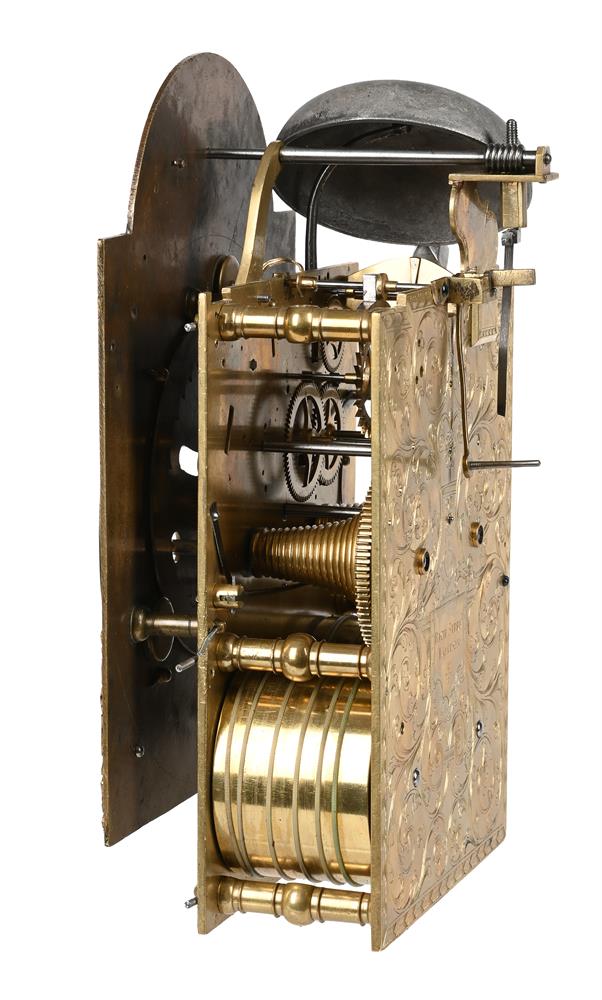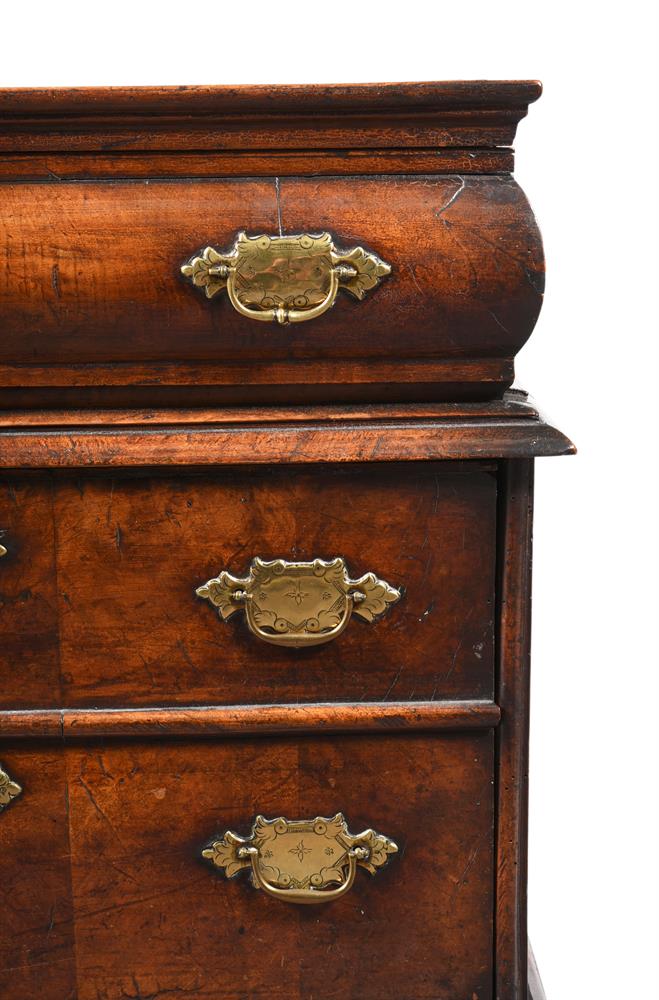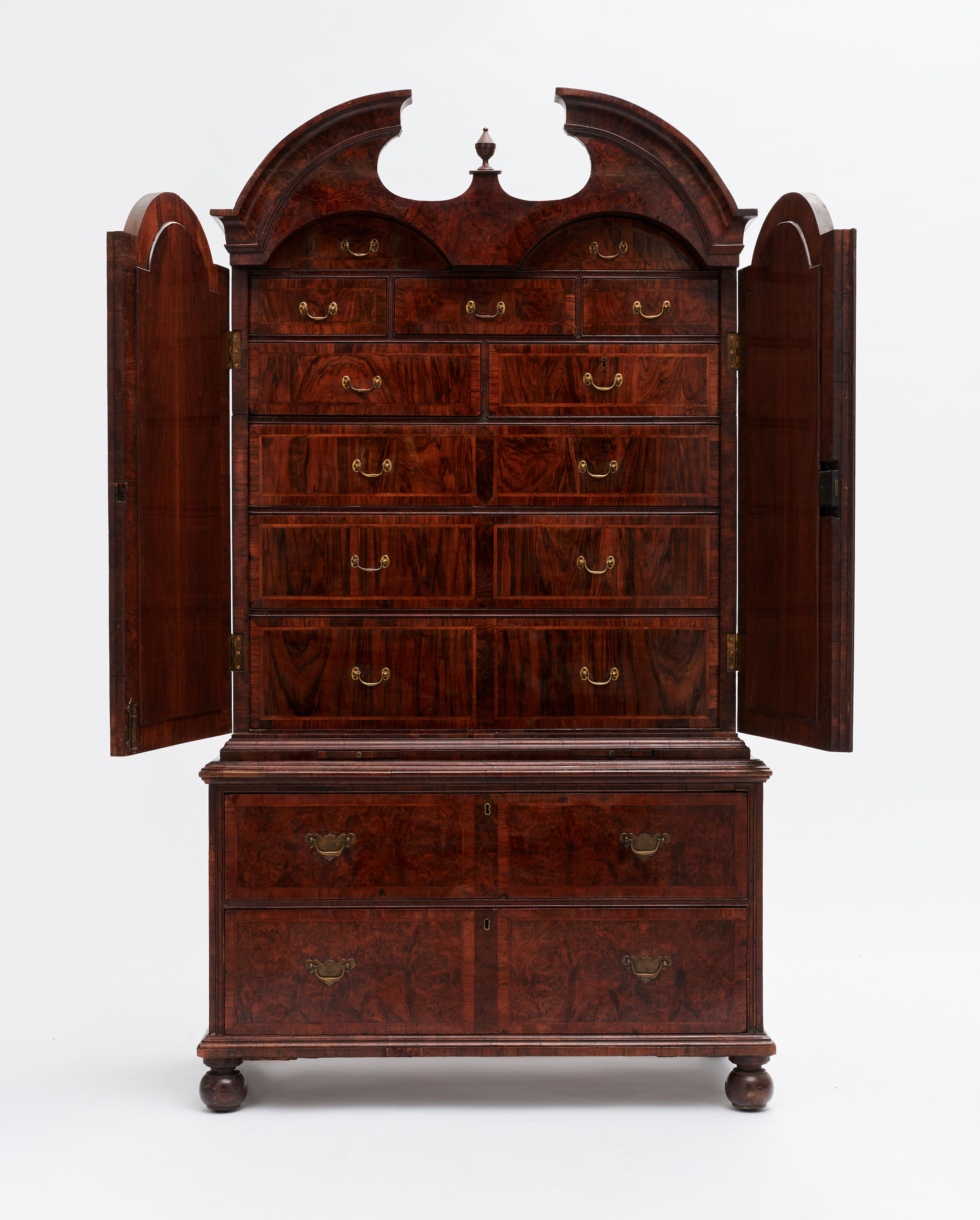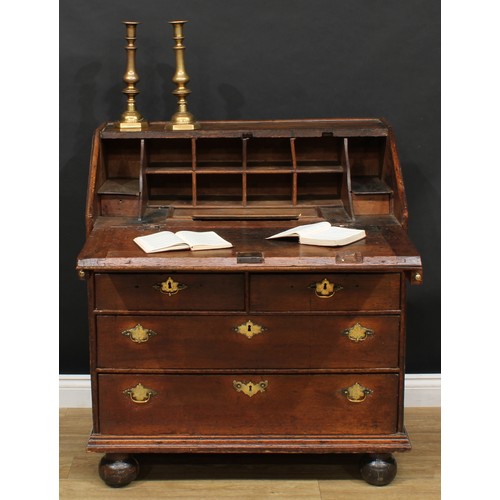An unusual Queen Anne oak longcase James Smith Aspendenhall, circa 1710 The substantial two-handed movement with plates measuring 9.25 by 7.75 inches united by four generous finned pillars pinned at each end and two additional bracing posts at the base, the separately wound trains of approximately four-day duration with the going train regulated by anchor escapement with 48 inch pendulum and the strike train utilising outside countwheel to sound on a very large bell mounted above the plates, the 11.5 inch square brass dial with foliate border engraved calendar aperture to the matted centre and sculpted steel hands within applied silvered Roman numeral chapter ring with stylised fleur-de-lys half hour markers, Arabic five minutes to outer track and signed James Smith Aspendenhall to lower margin, the angles applied with twin cherub and crown cast spandrels within herringbone engraved outer margin, the case with cavetto cornice and swollen frieze over glazed dial aperture and conforming rectangular side windows to the rising hood, the trunk with short rectangular door centred with an oval lenticle towards the lower edge, on moulded plinth base applied with double skirt, 211cm (83ins) high. James Smith of Aspendenhall, Hertfordshire appears to be unrecorded as a clockmaker, however when considering the quality and individuality of the current clock it is clear that he was a highly accomplished maker who may have worked in London at some point in his career. The movement is of massive construction and runs for around four days striking on very large bell. The use of a 48 inch pendulum is noteworthy which adds to the possibility that the maker was intending a clock that would both be very accurate and likely to have a long life. The size of the movement requires large side windows to the hood which slides upwards to allow access to the dial. The case is well made with fine mouldings adding to the impression that the clock was destined for use in a household which required accuracy and for the clock to be heard striking well beyond the confines of the space in which it was housed. Condition report disclaimer
An unusual Queen Anne oak longcase James Smith Aspendenhall, circa 1710 The substantial two-handed movement with plates measuring 9.25 by 7.75 inches united by four generous finned pillars pinned at each end and two additional bracing posts at the base, the separately wound trains of approximately four-day duration with the going train regulated by anchor escapement with 48 inch pendulum and the strike train utilising outside countwheel to sound on a very large bell mounted above the plates, the 11.5 inch square brass dial with foliate border engraved calendar aperture to the matted centre and sculpted steel hands within applied silvered Roman numeral chapter ring with stylised fleur-de-lys half hour markers, Arabic five minutes to outer track and signed James Smith Aspendenhall to lower margin, the angles applied with twin cherub and crown cast spandrels within herringbone engraved outer margin, the case with cavetto cornice and swollen frieze over glazed dial aperture and conforming rectangular side windows to the rising hood, the trunk with short rectangular door centred with an oval lenticle towards the lower edge, on moulded plinth base applied with double skirt, 211cm (83ins) high. James Smith of Aspendenhall, Hertfordshire appears to be unrecorded as a clockmaker, however when considering the quality and individuality of the current clock it is clear that he was a highly accomplished maker who may have worked in London at some point in his career. The movement is of massive construction and runs for around four days striking on very large bell. The use of a 48 inch pendulum is noteworthy which adds to the possibility that the maker was intending a clock that would both be very accurate and likely to have a long life. The size of the movement requires large side windows to the hood which slides upwards to allow access to the dial. The case is well made with fine mouldings adding to the impression that the clock was destined for use in a household which required accuracy and for the clock to be heard striking well beyond the confines of the space in which it was housed. Condition report disclaimer














Testen Sie LotSearch und seine Premium-Features 7 Tage - ohne Kosten!
Lassen Sie sich automatisch über neue Objekte in kommenden Auktionen benachrichtigen.
Suchauftrag anlegen